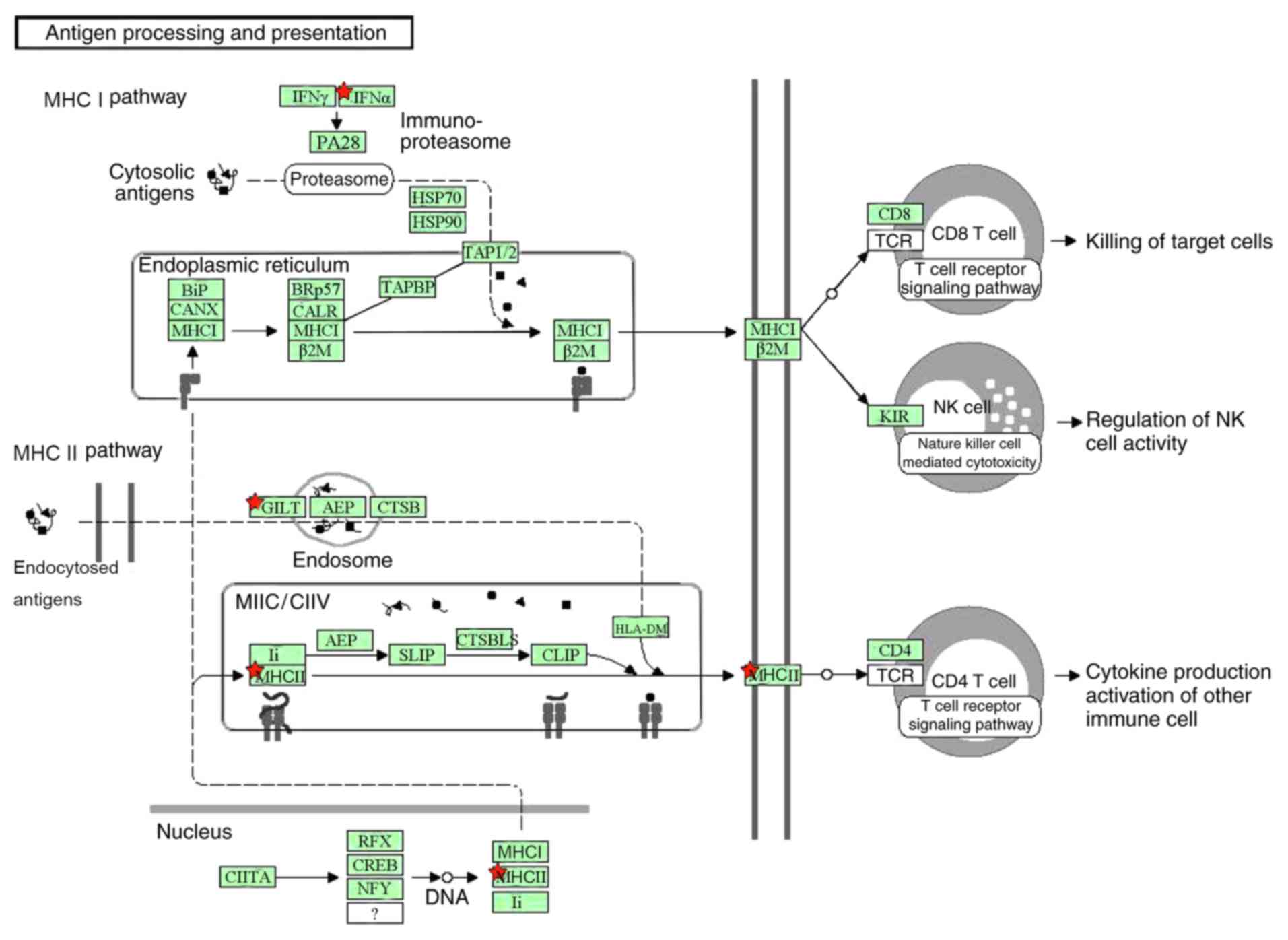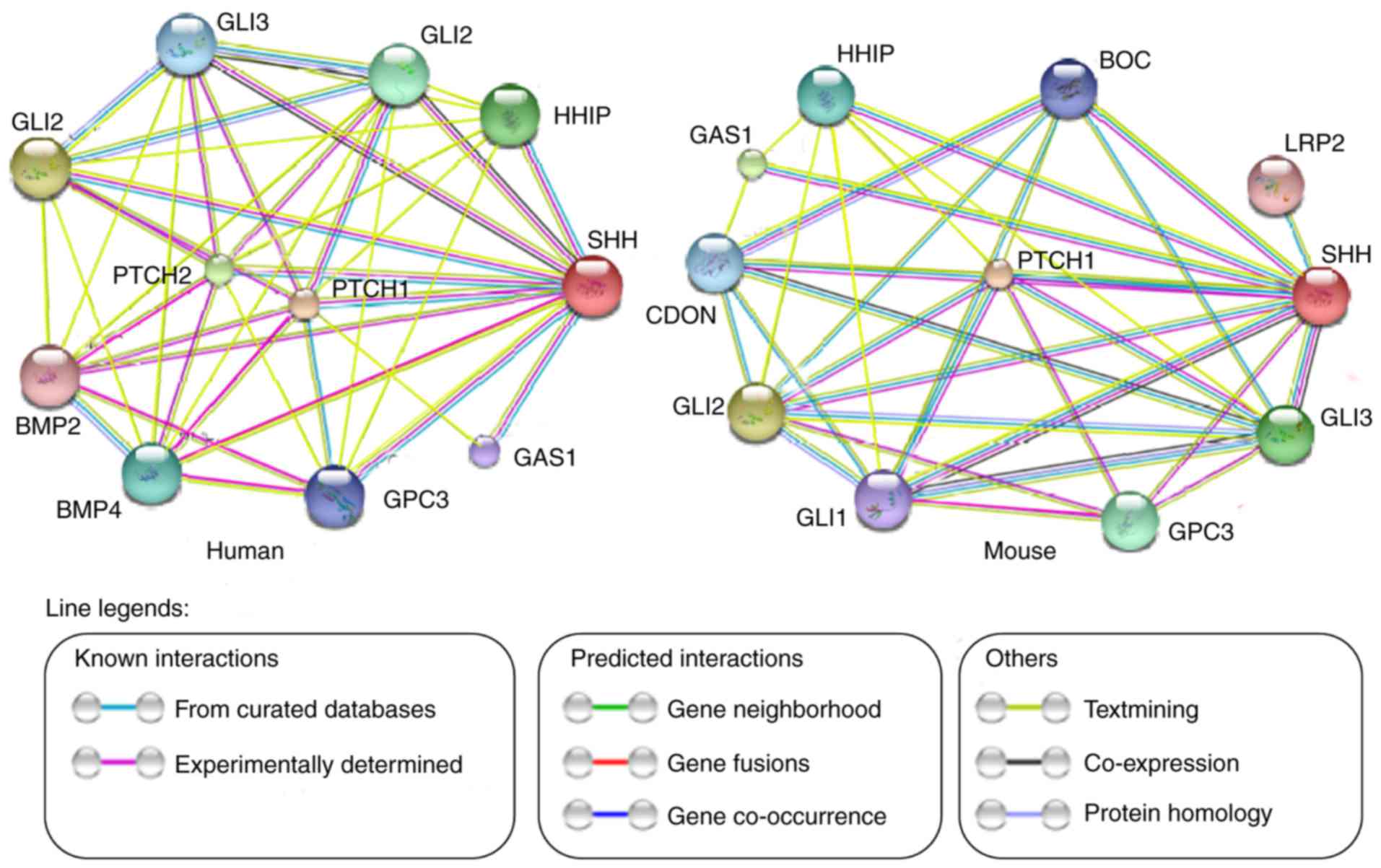|
1
|
Gronthos S, Brahim J, Li W, Fisher LW,
Cherman N, Boyde A, DenBesten P, Robey PG and Shi S: Stem cell
properties of human dental pulp stem cells. J Dent Res. 81:531–535.
2002. View Article : Google Scholar : PubMed/NCBI
|
|
2
|
Waddington RJ, Youde SJ, Lee CP and Sloan
AJ: Isolation of distinct progenitor stem cell populations from
dental pulp. Cells Tissues Organs. 189:268–274. 2009. View Article : Google Scholar : PubMed/NCBI
|
|
3
|
Gandia C, Armiñan A, García-Verdugo JM,
Lledó E, Ruiz A, Miñana MD, Sanchez-Torrijos J, Payá R, Mirabet V,
Carbonell-Uberos F, et al: Human dental pulp stem cells improve
left ventricular function, induce angiogenesis, and reduce infarct
size in rats with acute myocardial infarction. Stem Cells.
26:638–645. 2008. View Article : Google Scholar : PubMed/NCBI
|
|
4
|
Mead B, Logan A, Berry M, Leadbeater W and
Scheven BA: Dental pulp stem cells, a paracrine-mediated therapy
for the retina. Neural Regen Res. 9:577–578. 2014. View Article : Google Scholar : PubMed/NCBI
|
|
5
|
Nicola FC, Rodrigues LP, Crestani T,
Quintiliano K, Sanches EF, Willborn S, Aristimunha D, Boisserand L,
Pranke P and Netto CA: Human dental pulp stem cells transplantation
combined with treadmill training in rats after traumatic spinal
cord injury. Braz J Med Biol Res. 49:e53192016. View Article : Google Scholar : PubMed/NCBI
|
|
6
|
Majumdar D, Kanafi M, Bhonde R, Gupta P
and Datta I: differential neuronal plasticity of dental pulp stem
cells from exfoliated deciduous and permanent teeth towards
dopaminergic neurons. J Cell Physiol. 231:2048–2063. 2016.
View Article : Google Scholar : PubMed/NCBI
|
|
7
|
Tamaoki N, Takahashi K, Aoki H, Iida K,
Kawaguchi T, Hatakeyama D, Inden M, Chosa N, Ishisaki A, Kunisada
T, et al: The homeobox gene DLX4 promotes generation of human
induced pluripotent stem cells. Sci Rep. 4:72832014. View Article : Google Scholar : PubMed/NCBI
|
|
8
|
Wu S, Wu F and Jiang Z: Identification of
hub genes, key miRNAs and potential molecular mechanisms of
colorectal cancer. Oncol Rep. 38:2043–2050. 2017. View Article : Google Scholar : PubMed/NCBI
|
|
9
|
Huang da W, Sherman BT and Lempicki RA:
Systematic and integrative analysis of large gene lists using DAVID
bioinformatics resources. Nat Protoc. 4:44–57. 2009. View Article : Google Scholar : PubMed/NCBI
|
|
10
|
Szklarczyk D, Franceschini A, Wyder S,
Forslund K, Heller D, Huerta-Cepas J, Simonovic M, Roth A, Santos
A, Tsafou KP, et al: STRING v10: Protein-protein interaction
networks, integrated over the tree of life. Nucleic Acids Res.
43(Database issue): D447–D452. 2015. View Article : Google Scholar : PubMed/NCBI
|
|
11
|
Chang CC, Chang KC, Tsai SJ, Chang HH and
Lin CP: Neurogenic differentiation of dental pulp stem cells to
neuron-like cells in dopaminergic and motor neuronal inductive
media. J Formos Med Assoc. 113:956–965. 2014. View Article : Google Scholar : PubMed/NCBI
|
|
12
|
Bray AF, Cevallos RR, Gazarian K and Lamas
M: Human dental pulp stem cells respond to cues from the rat retina
and differentiate to express the retinal neuronal marker rhodopsin.
Neuroscience. 280:142–155. 2014. View Article : Google Scholar : PubMed/NCBI
|
|
13
|
Rosa V, Dubey N, Islam I, Min KS and Nor
JE: Pluripotency of stem cells from human exfoliated deciduous
teeth for tissue engineering. Stem Cells Int. 2016:59578062016.
View Article : Google Scholar : PubMed/NCBI
|
|
14
|
Alongi DJ, Yamaza T, Song Y, Fouad AF,
Romberg EE, Shi S, Tuan RS and Huang GT: Stem/progenitor cells from
inflamed human dental pulp retain tissue regeneration potential.
Regen Med. 5:617–631. 2010. View Article : Google Scholar : PubMed/NCBI
|
|
15
|
Yazid FB, Gnanasegaran N, Kunasekaran W,
Govindasamy V and Musa S: Comparison of immunodulatory properties
of dental pulp stem cells derived from healthy and inflamed teeth.
Clin Oral Investig. 18:2103–2112. 2014. View Article : Google Scholar : PubMed/NCBI
|
|
16
|
Nakamura S, Yamada Y, Katagiri W, Sugito
T, Ito K and Ueda M: Stem cell proliferation pathways comparison
between human exfoliated deciduous teeth and dental pulp stem cells
by gene expression profile from promising dental pulp. J of Endod.
35:1536–1542. 2009. View Article : Google Scholar
|
|
17
|
Wang X, Sha XJ, Li GH, Yang FS, Ji K, Wen
LY, Liu SY, Chen L, Ding Y and Xuan K: Comparative characterization
of stem cells from human exfoliated deciduous teeth and dental pulp
stem cells. Arch Oral Biol. 57:1231–1240. 2012. View Article : Google Scholar : PubMed/NCBI
|
|
18
|
Volponi AA, Pang Y and Sharpe PT: Stem
cell-based biological tooth repair and regeneration. Trends Cell
Biol. 20:715–722. 2010. View Article : Google Scholar : PubMed/NCBI
|
|
19
|
Varjosalo M and Taipale J: Hedgehog:
Functions and mechanisms. Genes Dev. 22:2454–2472. 2008. View Article : Google Scholar : PubMed/NCBI
|
|
20
|
Li J, Feng J, Liu Y, Ho TV, Grimes W, Ho
HA, Park S, Wang S and Chai Y: BMP-SHH signaling network controls
epithelial stem cell fate via regulation of its niche in the
developing tooth. Dev Cell. 33:125–135. 2015. View Article : Google Scholar : PubMed/NCBI
|
|
21
|
Hu X, Zhang S, Chen G, Lin C, Huang Z,
Chen Y and Zhang Y: Expression of SHH signaling molecules in the
developing human primary dentition. BMC Dev Biol. 13:112013.
View Article : Google Scholar : PubMed/NCBI
|
|
22
|
Kumamoto H, Ohki K and Ooya K: Expression
of Sonic hedgehog (SHH) signaling molecules in ameloblastomas. J
Oral Pathol Med. 33:185–190. 2004. View Article : Google Scholar : PubMed/NCBI
|
|
23
|
Villavicencio EH, Walterhouse DO and
Iannaccone PM: The sonic hedgehog-patched-gli pathway in human
development and disease. Am J Hum Genet. 67:1047–1054. 2000.
View Article : Google Scholar : PubMed/NCBI
|
|
24
|
Bai CB, Auerbach W, Lee JS, Stephen D and
Joyner AL: Gli2, but not Gli1, is required for initial Shh
signaling and ectopic activation of the Shh pathway. Development.
129:4753–4761. 2002.PubMed/NCBI
|
|
25
|
Gan H, Liu H, Zhang H, Li Y, Xu X, Xu X
and Xu J: SHh-Gli1 signaling pathway promotes cell survival by
mediating baculoviral IAP repeat-containing 3 (BIRC3) gene in
pancreatic cancer cells. Tumour Biol. 37:9943–9950. 2016.
View Article : Google Scholar : PubMed/NCBI
|
|
26
|
Allen BL, Tenzen T and McMahon AP: The
Hedgehog-binding proteins Gas1 and Cdo cooperate to positively
regulate Shh signaling during mouse development. Genes Dev.
21:1244–1257. 2007. View Article : Google Scholar : PubMed/NCBI
|
















